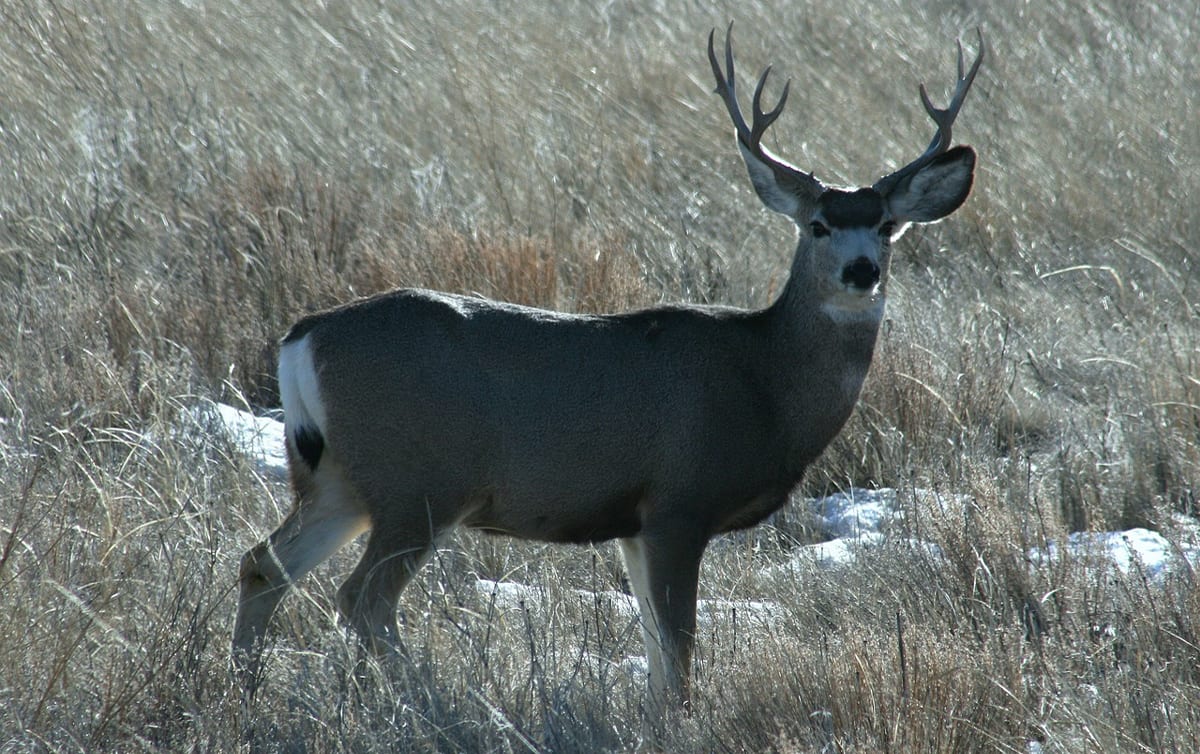
Interior Announces Grants to 11 Western States for Big Game Winter Range and Migration Corridor Scientific Research
In February, the Department of the Interior announced another round of $3.2 million in grant funding for 11 western states, bringing the department’s and other stakeholders’ support of big game species habitat conservation and scientific research for migration corridors and winter ranges to more than $22 million. These grants are a part of the department’s ongoing efforts to execute on Secretary’s Order 3362, “Improving Habitat Quality in Western Big-Game Winter Range and Migration Corridors.”
“Big-game species such as deer, elk, and pronghorn contribute to the West’s quality of life and provide hunting and wildlife viewing opportunities,” said Secretary of the Interior David Bernhardt. “These grants will help states further their scientific research to ensure sustainable wildlife populations and improve the ongoing, collaborative, on-the-ground efforts to conserve habitat for these animals for generations to come.”
The funding supports 19 priority research projects chosen by recipient state wildlife agencies to help identify priority corridors or winter range areas, enhance data analysis and mapping, and identify movement corridors that either cross or are impeded by highways. The secretary’s order directs appropriate bureaus within the department to work in close partnership with the states of Arizona, California, Colorado, Idaho, Montana, Nevada, New Mexico, Oregon, Utah, Washington, and Wyoming to enhance and improve the quality of big-game winter range and migration corridor habitat on federal lands.
Big-game species migrate across thousands of miles of federal, state, tribal, and private lands during their annual journeys. Secretary’s Order 3362 fosters improved collaboration with states and private landowners and coalesces these groups around robust science to more effectively and efficiently target on-the-ground conservation in the highest priority, scientifically-defined migration corridors or winter range areas.
Last year, the department supported 17 research projects with similar grants that totaled more than $3.2 million. Over the first two years of implementing Secretary’s Order 3362, $6.4 million has supported 36 research projects vital to scientifically identifying migration corridors and seasonal use areas (i.e. winter range). In addition to funding state-defined priority research projects, the department has made available another $1.4 million over two years to assist state wildlife agencies with big game movement data analysis and corridor mapping, and almost $14.4 million has been matched in partnership-assisted grant funding for direct habitat conservation in support of the order.
Of the recently funded projects, eight focus on mule deer, six on elk, and five on pronghorn.
Examples of state-led research projects include the Boulder Mountain wildlife management unit in southern Utah, which hosts the highest timbered plateau in North America. The Boulder Mountain mule deer population is migratory, with animals using high elevation habitat on U.S Forest Service lands in the summer and lower elevation habitats on the Bureau of Land Management and state lands in the winter. Currently, little is known about migration timing and the locations of migration corridors for mule deer in this area. Population movements appear to be rather complex as deer that share the same summer range on USFS land have the option to move to over 15 different winter ranges. Research funding will allow scientists to mark 100 mule deer with GPS tracking collars and follow their movements over multiple years in order to describe migratory corridors and determine the relative importance of those winter ranges to the mule deer population.
“Right now, our state is one of the fastest-growing in the country,” said Utah Division of Wildlife Resources Director Mike Fowlks. “Traffic is increasing, roads are expanding, and new residential and business developments are popping up everywhere you look. All that growth has the potential to impact how wildlife move and migrate. Secretary’s Order 3362 is critical to our effort to understand and preserve big game migrations. In just two years, we have been able to capture and track the movements of over 300 mule deer and 30 pronghorn in six areas of the state because of this order. The tracking data from several of those projects is being used right now to plan crossing and corridor easement projects, which is helping maintain healthy, abundant big game populations in the face of all the change that is occurring.”
Viewpoints and perspectives expressed throughout The Independent are those of the individual contributors. They do not necessarily reflect those held by the staff of The Independent or our advertising sponsors. Your comments, rebuttals, and contributions are welcome in accordance with our Terms of Service. Please be respectful and abide by our Community Rules. If you have privacy concerns you can view our Privacy Policy here. Thank you!
Click here to submit an article, guest opinion piece, or a Letter to the Editor




